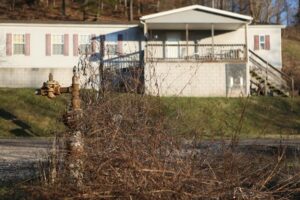Landmark study reveals that millions of Americans live less than a mile from an orphaned oil and gas well
By Adam Peltz & Kate Roberts
This week, the Department of the Interior announced nearly $660 million in grant funding to plug orphan wells across the U.S., adding to $560 million in initial funding from last summer. The news comes on the heels of new research led by researchers at McGill University and EDF experts that quantifies the extent of the orphan well problem this funding will begin to tackle.
The study found that at least 4.6 million people are living within about a half mile of an orphaned oil and gas well. Published in June 2023 in Environmental Research Letters, the study examined the environmental risks of orphaned wells and how plugging or repurposing wells could play a role in the transition to net zero. An additional key finding is that many essential technical details about this well set, like depth and condition, and environmental impacts, including methane emission rates and whether they have caused groundwater contamination, are largely unknown.
This study used a 2021 dataset of 86,000 documented wells, but this is just a fraction of all orphaned wells in the U.S. A separate EDF analysis on an updated data set of 120,000 documented orphaned wells found that 14 million people are living within a mile of an orphan well. And we know that there are potentially over a million more undocumented orphaned wells scattered throughout the country.
When oil and gas wells are no longer productive, it is the responsibility of their operator to plug them to prevent methane and other dangerous substances from leaking into the atmosphere and groundwater. However, operators often fail to properly plug their wells and then go bankrupt, leaving these wells “orphaned.” The states — and taxpayers — are then left to deal with the expensive task of plugging the orphaned wells.
People living near orphaned wells are at higher risk for exposure to methane and other toxic air pollutants in addition to subsurface fluids containing hydrocarbons and other contaminants leaking to groundwater and soils. But the study revealed that there is not yet sufficient data available to quantify the health risk to those living in proximity to orphaned wells.
These results highlight the importance of work underway by the U.S. Department of Interior and over two dozen oil and gas producing states to plug these wells with $4.7 billion in federal funding through the Infrastructure Investment and Jobs Act of 2021. In the coming years, thousands of wells will be plugged across the country through this program. More resources are still needed, however, to tackle the extent of the problem. The study estimated that plugging costs for documented orphaned wells could exceed the $4.7 billion in federal funding by 30-80%. With the larger updated count of 120 thousand documented orphan wells and rapidly increasing costs, the overage could be more like 100%.
“And it will certainly not cover the large number of orphaned wells which are undocumented – whose very existence we know of but whose exact locations and depth remain unknown,” said Mary Kang, Assistant Professor in the Department of Civil Engineering at McGill and lead author of the paper. “We need to rapidly develop a framework and environmental monitoring datasets to prioritize wells for plugging, since tens of thousands of wells will be plugged in a matter of years.”
The study also explored how orphaned wells might be utilized in pursuit of net zero goals. Geospatial analysis revealed that tens of thousands of orphaned wells are in areas that are being considered for geologic storage of CO2 and hydrogen, where abandoned wells could provide unintended pathways for emissions and could also provide opportunities to be retrofitted as monitoring wells for these operations. A significant number of orphaned wells are also in basins favorable to enhanced geothermal energy and could potentially be repurposed as geothermal wells.
These insights into the potential beneficial uses and gaps in information and knowledge helped lay the groundwork for the Abandoned Well Remediation Research and Development Act. The AWRRDA, introduced in October 2022, is intended to increase funding to the Department of Energy by up to $160 million over five years, to carry out research on the beneficial use of orphaned and abandoned wells in addition to research and development on plugging technology and improving tools for locating undocumented orphaned wells and monitoring technologies.











